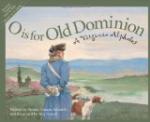Next morning there was much puffing of engines and ringing of signal bells down in Chippoak Creek. Gadabout went ahead and backed and sidled. And it was all to find a new way to go to Brandon. Mrs. Harrison had told us of a landing-place in the woods at the creek side from which a sort of roadway led to the house. Fortunately, our charts indicated, near this landing, a small depression in the bed of the creek where there would be sufficient depth of water for our houseboat to float even at low tide. At last, we got over the flats and into the hole in the bottom of the creek that seemed to have been made for us.
We rowed ashore to a yellow crescent of sandy beach shaded by cypresses where a cart-path led off through the woods. We called it the woods-way to Brandon. It followed the shore of the creek a little way, and through the leafy screen we caught glimpses of Gadabout out in the stream, now with a cone-tipped branch of pine and again with a star-leaved limb of sweet gum for a foreground setting.
Farther along were many dogwood trees; and in the springtime these woods must be dotted with those white blossom-tents that so charmed the first settlers on their way up the river. Here, for the first time, we came upon the trailing cedar spreading its feathery carpet under the trees. Ferns lifted their fronds in thick, wavy clusters. The freshness from a night storm was upon every growing thing; a clearing northwest wind was in the tree-tops; and the air was filled with the spicy sweetness of the woodland.
The way led out of the shadow of the trees into the open, and we came upon “the quarters”—long, low buildings with patches of corn and sweet potatoes about them. Two coloured women were digging in the gardens and another was busy over an out-of-door washtub. A group of picaninnies played about a steaming kettle swung upon a cross-stick above an open-air fire. One fat brown baby sat in a doorway poking a pudgy thumb into a saucer of food and keeping very watchful eyes on the strangers. Beyond the quarters were barns and some small houses.
[Illustration: A side path to the manor-house.]
[Illustration: The woods-way to Brandon.]
And here was our first reminder of a distressing chapter in the story of Brandon. We knew that but few of these buildings were old-time outbuildings of the estate. The Civil War bore hard upon this as upon other homes along the James. It left little upon the plantation except the old manor-house itself, and that injured and defaced.
On ahead, we could see the great grove in which the manor-house stands, looming up in the midst of the cleared land like a small forest reservation. Our route this time brought us to the homestead from the landward side through an open park, and we got a better view of the building than the dense foliage on the other side had permitted. The house is of the long colonial type, consisting of a square central building, two large flanking wings, and two connecting corridors. It is built of brick laid in Flemish bond, showing a broken pattern of glazed headers. Each front has its wide central porch and double-door entranceway.




